19 styles
Tester
Weights
Glyphs
Languages
Abenaki, Afaan Oromo, Afar, Afrikaans, Albanian, Alsatian, Amis, Anuta, Aragonese, Aranese, Aromanian, Arrernte, Arvanitic, Asturian, Atayal, Aymara, Bashkir, Basque, Belarusian, Bemba, Bikol, Bislama, Bosnian, Breton, Bulgarian Romanization, Cape Verdean, Catalan, Cebuano, Chamorro, Chavacano, Chichewa, Chickasaw, Cimbrian, Cofan, Corsican, Creek, Crimean Tatar, Croatian, Czech, Danish, Dawan, Delaware, Dholuo, Drehu, Dutch, English, Esperanto, Estonian, Faroese, Fijian, Filipino, Finnish, Folkspraak, French, Frisian, Friulian, Gagauz, Galician, Ganda, Genoese, German, Gikuyu, Gooniyandi, Greenlandic, Greenlandic Old Orthography, Guadeloupean, Gwichin, Haitian Creole, Han, Hawaiian, Hiligaynon, Hopi, Hotcak, Hungarian, Icelandic, Ido, Ilocano, Indonesian, Interglossa, Interlingua, Irish, Istroromanian, Italian, Jamaican, Javanese, Jerriais, Kala Lagaw Ya, Kapampangan, Kaqchikel, Karakalpak, Karelian, Kashubian, Kikongo, Kinyarwanda, Kiribati, Kirundi, Klingon, Kurdish, Ladin, Latin, Latino Sine, Latvian, Lithuanian, Lojban, Lombard, Low Saxon, Luxembourgish, Maasai, Makhuwa, Malay, Maltese, Manx, Maori, Marquesan, Meglenoromanian, Meriam Mir, Mirandese, Mohawk, Moldovan, Montagnais, Montenegrin, Murrinhpatha, Nagamese Creole, Ndebele, Neapolitan, Ngiyambaa, Niuean, Noongar, Norwegian, Novial, Occidental, Occitan, Oshiwambo, Ossetian, Palauan, Papiamento, Piedmontese, Polish, Portuguese, Potawatomi, Qeqchi, Quechua, Rarotongan, Romanian, Romansh, Rotokas, Sami Inari, Sami Lule, Sami Northern, Sami Southern, Samoan, Sango, Saramaccan, Sardinian, Scottish Gaelic, Serbian, Seri, Seychellois, Shawnee, Shona, Sicilian, Silesian, Slovak, Slovenian, Slovio, Somali, Sorbian Lower, Sorbian Upper, Sotho Northern, Sotho Southern, Spanish, Sranan, Sundanese, Swahili, Swazi, Swedish, Tagalog, Tahitian, Tetum, Tok Pisin, Tokelauan, Tongan, Tshiluba, Tsonga, Tswana, Tumbuka, Turkish, Turkmen, Tuvaluan, Tzotzil, Ukrainian, Uzbek, Venetian, Vepsian, Volapuk, Voro, Wallisian, Walloon, Waraywaray, Warlpiri, Wayuu, Welsh, Wikmungkan, Wiradjuri, Wolof, Xavante, Xhosa, Yapese, Yindjibarndi, Zapotec, Zulu, Zuni.
About Foundry Aeterna
Introducing Foundry Aeterna, an expansive new neo-grotesk typeface. With the persistent reliance on ubiquitous, overused neo-grotesk typefaces in visual culture, a deeper issue comes into focus, one of complacency, sameness and creative stagnation. What began as a pursuit of clarity and neutrality has calcified into default thinking, where type design no longer challenges or contributes, but merely fills space.
In response to this same-old cycle, Foundry Aeterna was conceived not as another revival or facsimile, but as a decisive, thoughtful interpretation of how a neo-grotesk should be for modern typography, in the new digital age. Grounded in the lineage of modernist foundations and minimalist principles, yet unafraid to speak with distinct tone, rhythm and detail. Foundry Aeterna distils over a century of typographic nuance into a versatile, expansive family tailored to communicate with purpose, precision and presence.
Foundry Aeterna, a bold European, informed neo-grotesk typeface, with a workhorse aesthetic. Its essentialist design prioritizes clarity and neutrality, enabling it to adapt seamlessly across contexts and applications without imposing emotion or subjective associations. Form follows function. Beneath Foundry Aeterna’s sturdy, no-nonsense linear shapes lies its true beauty, carefully crafted details that reveal refined, robust efficiency. With balanced glyphs and a neutral, modern appearance, Foundry Aeterna offers versatile legibility and timeless appeal.
What is eternity? Scientists and philosophers have pondered that question since time immemorial. Religious leaders have promised it. Artists, writers and musicians have tried to interpret it. Yet there are no answers, it remains the eternal question. From the Latin word for eternal, Foundry Aeterna finds its name.
Harmonious utilitarian letterforms, a large x-height relative to its capitals and compact spacing, imbues a calm readable experience, particularly in smaller text sizes. Closed terminals and a generally rounder neo-grotesk letterform promotes a spacious internal structure, without sacrificing legibility. A distinctive hallmark of Foundry Aeterna is the subtle, slightly extended terminals ‘a, c, g and s’ and horizontal shaping to the ‘a, f, j, t and y’, details that quietly express its contemporary character.
Accessible legibility features include: a distinctive, wider ‘J’, an extended ‘K’ arm, ‘M’s’ centre Vertex raised and an extended through ‘Q’ tail in the capitals. The lowercase features consist of: an ‘a’ with a serpentine internal shape with a flared stem stroke, a double storied ‘g’ and an alternative straight descender stroke, a lowercase ‘l’ with a horizontal foot (for enhanced legibility), the ‘t’ through bar is curved and a straight ‘y’ descender.
Foundry Aeterna includes thoughtful alternate forms to enhance clarity and character recognition. These include a slashed zero for disambiguation, a figure one with a baseline bar in the tabular set and three distinct ampersand styles: one featuring a straight diagonal, one with a horizontal terminal and another based on the Latin word ‘et’. Each of these elements is designed to support optimum legibility across various contexts.
Alongside the typeface, Foundry Aeterna includes a collection of over 290 meticulously designed icons and symbols. Created to support a broad range of applications: from transport and user interfaces to information systems and wayfinding. The Symbol set is built on the typeface’s capital height, aligned to the baseline and centrally spaced for seamless integration and ease of use.
It is not merely a typeface, but a feeling spoken through form, a vision etched in rhythm, through line and space, the essence of visual harmony. Foundry Aeterna calls designers to go beyond the ordinary, inviting type to become more than a tool, a voice
that speaks with soul.
A special ‘Thank you’ to David Bennett of OPX for his kind support, contribution and collaboration on the Foundry Aeterna – Process book, we couldn’t have done it without him.
opx.studio/
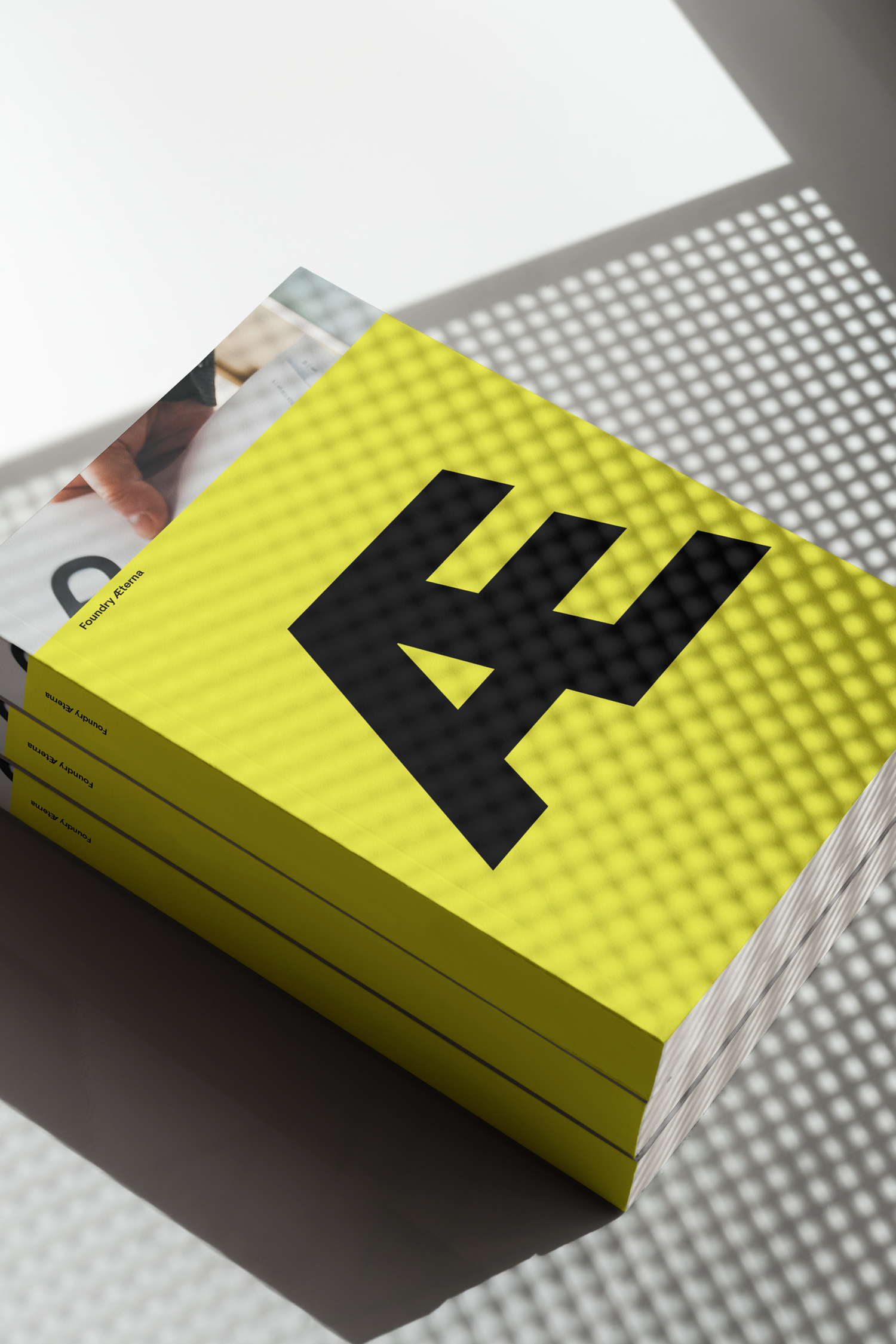
Foundry Aeterna – Process book, designed by OPX.
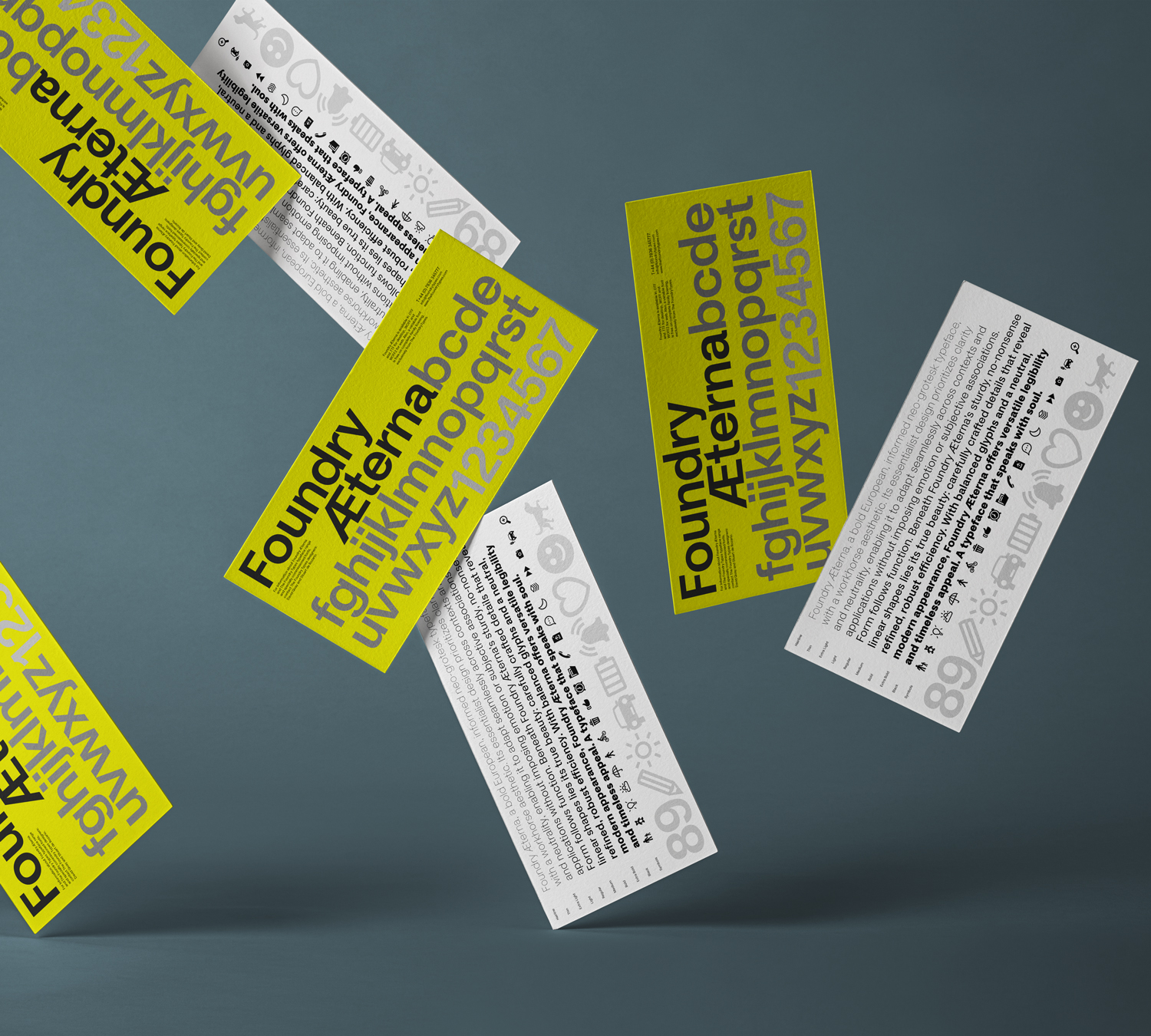
The Foundry flyer cards make a return after 15 years, designed by David Quay/The Foundry Types.
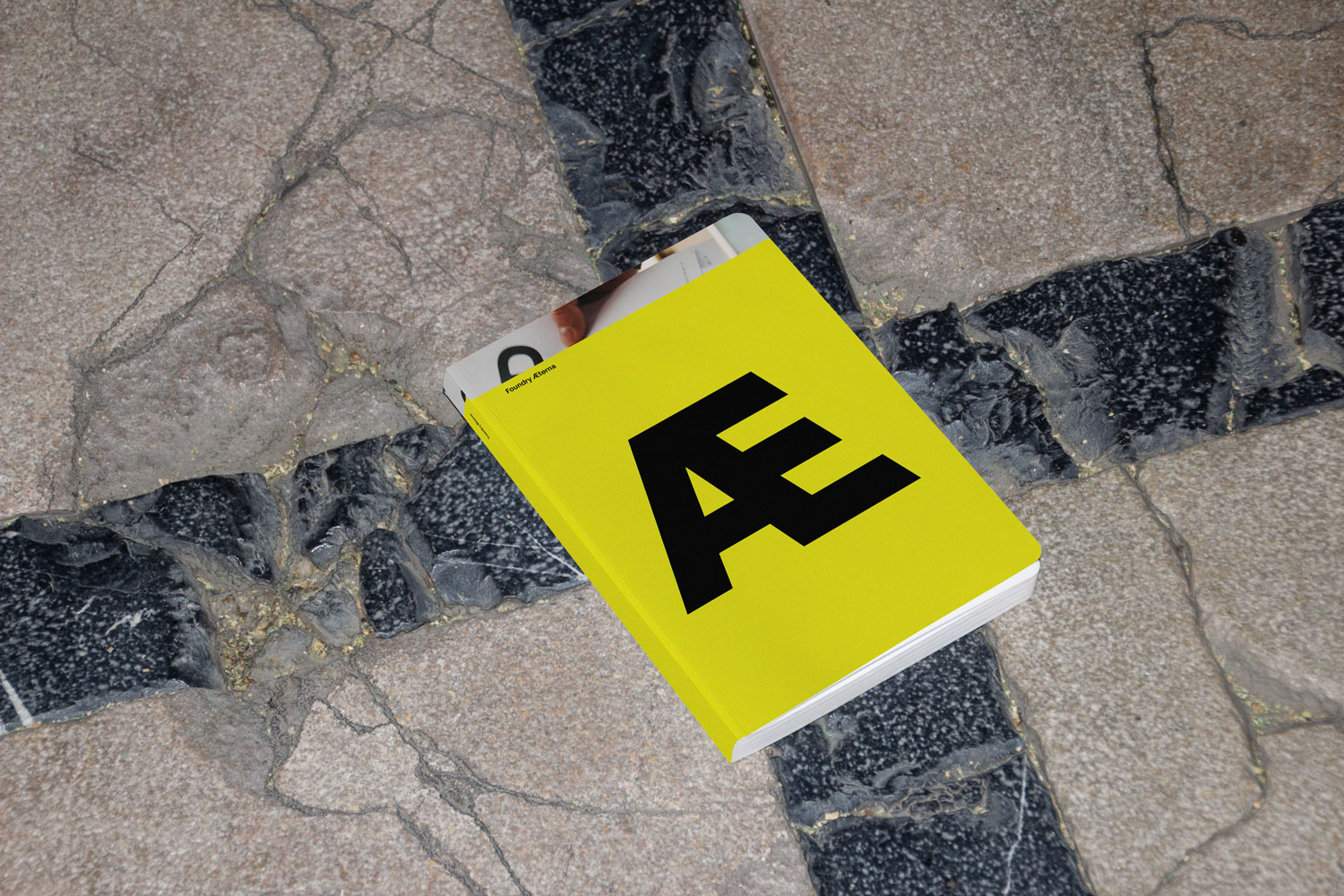
Foundry Aeterna – Process book, designed by OPX.
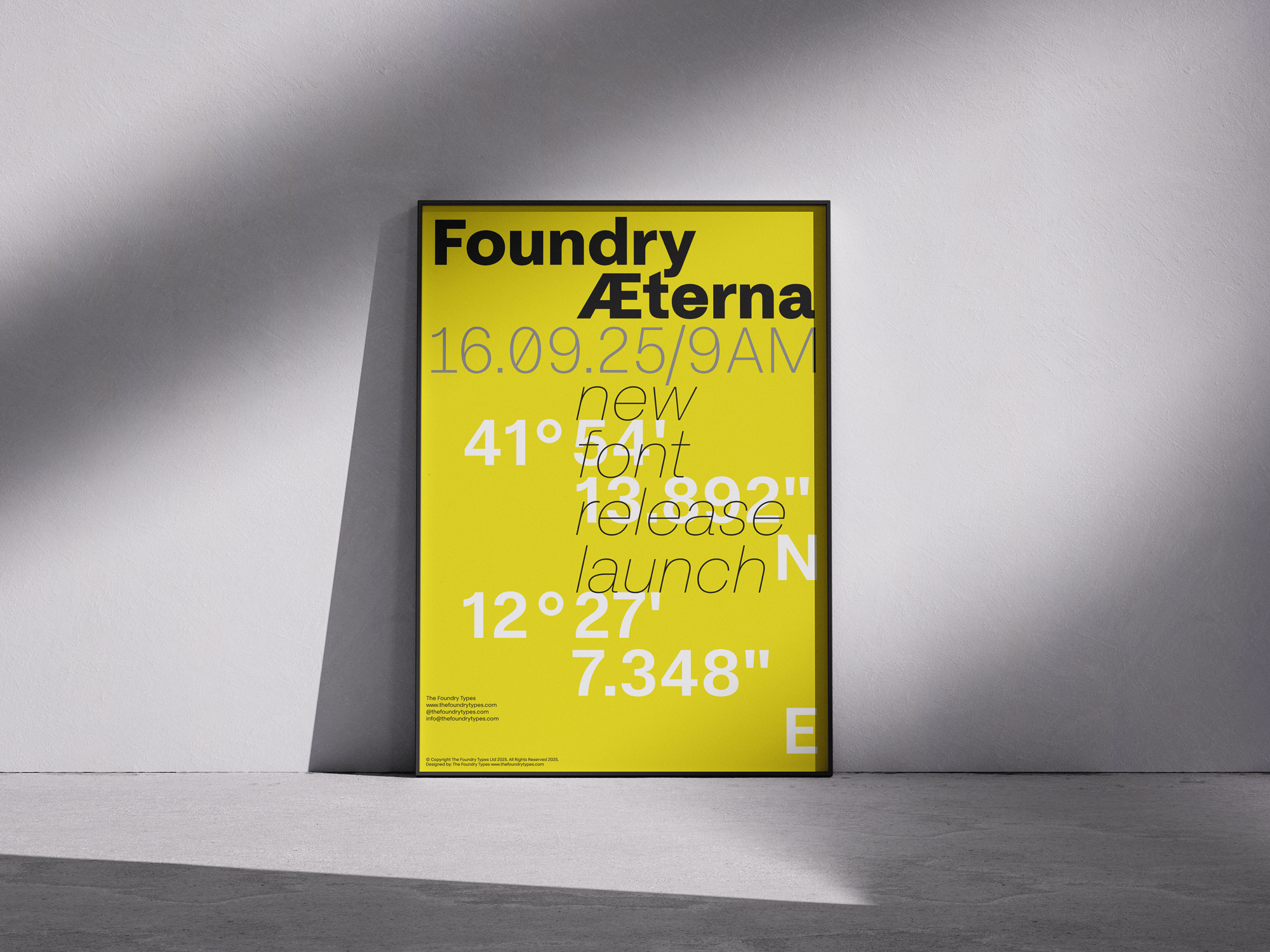
Foundry Aeterna poster, designed by Stuart de Rozario/The Foundry Types.
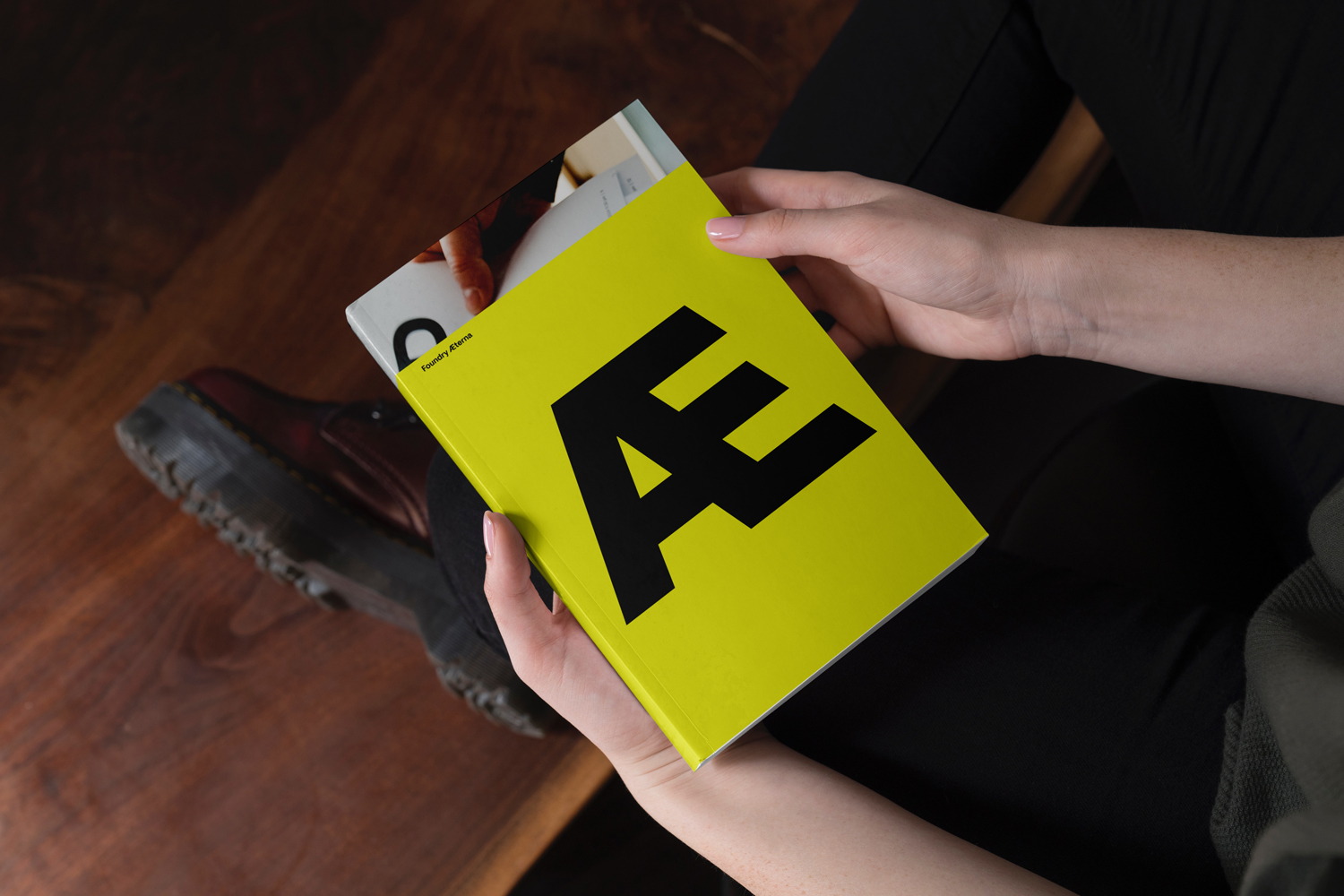
Foundry Aeterna – Process book, designed by OPX.
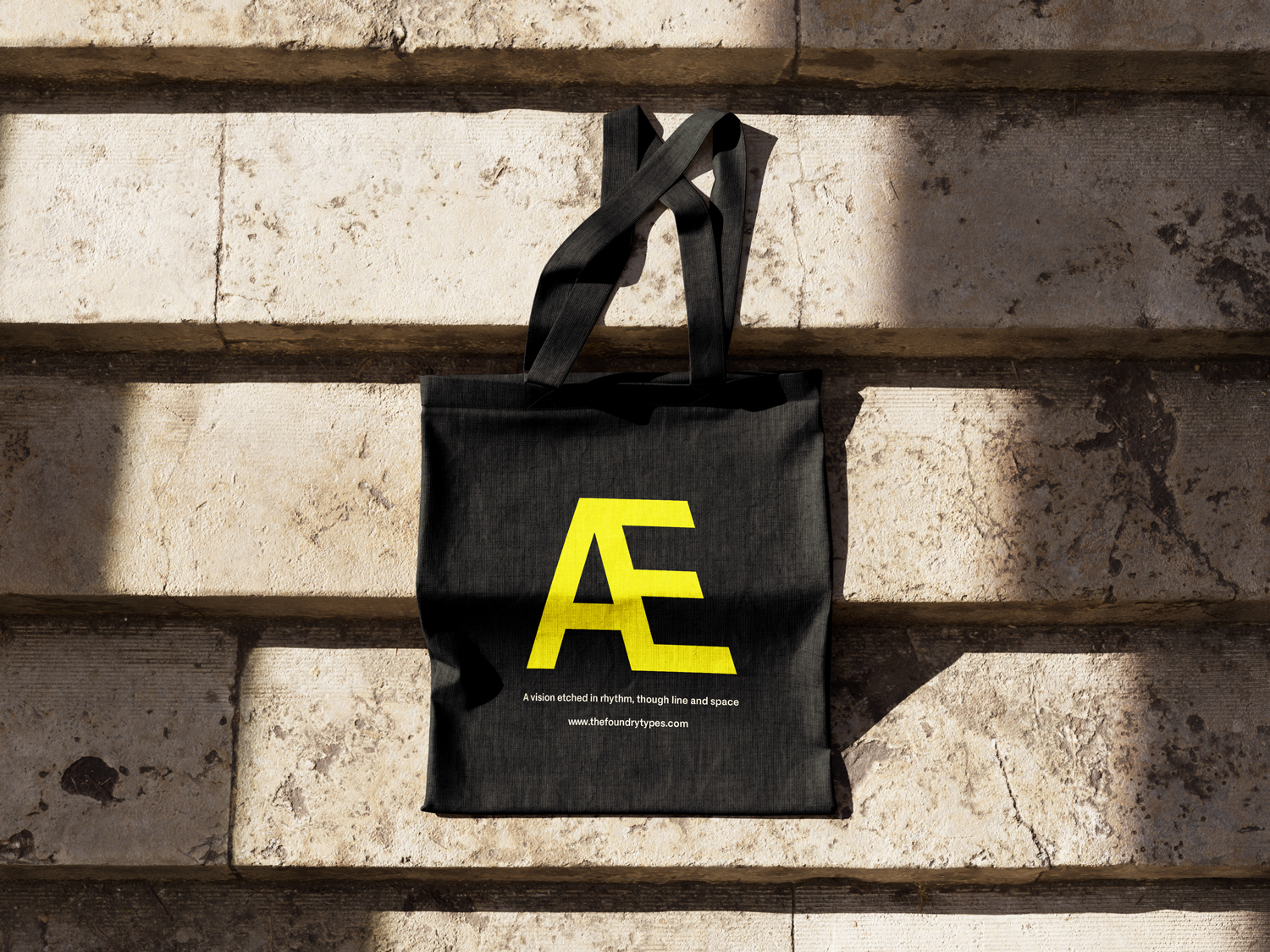
Foundry Aeterna tote bag, designed by The Foundry Types.
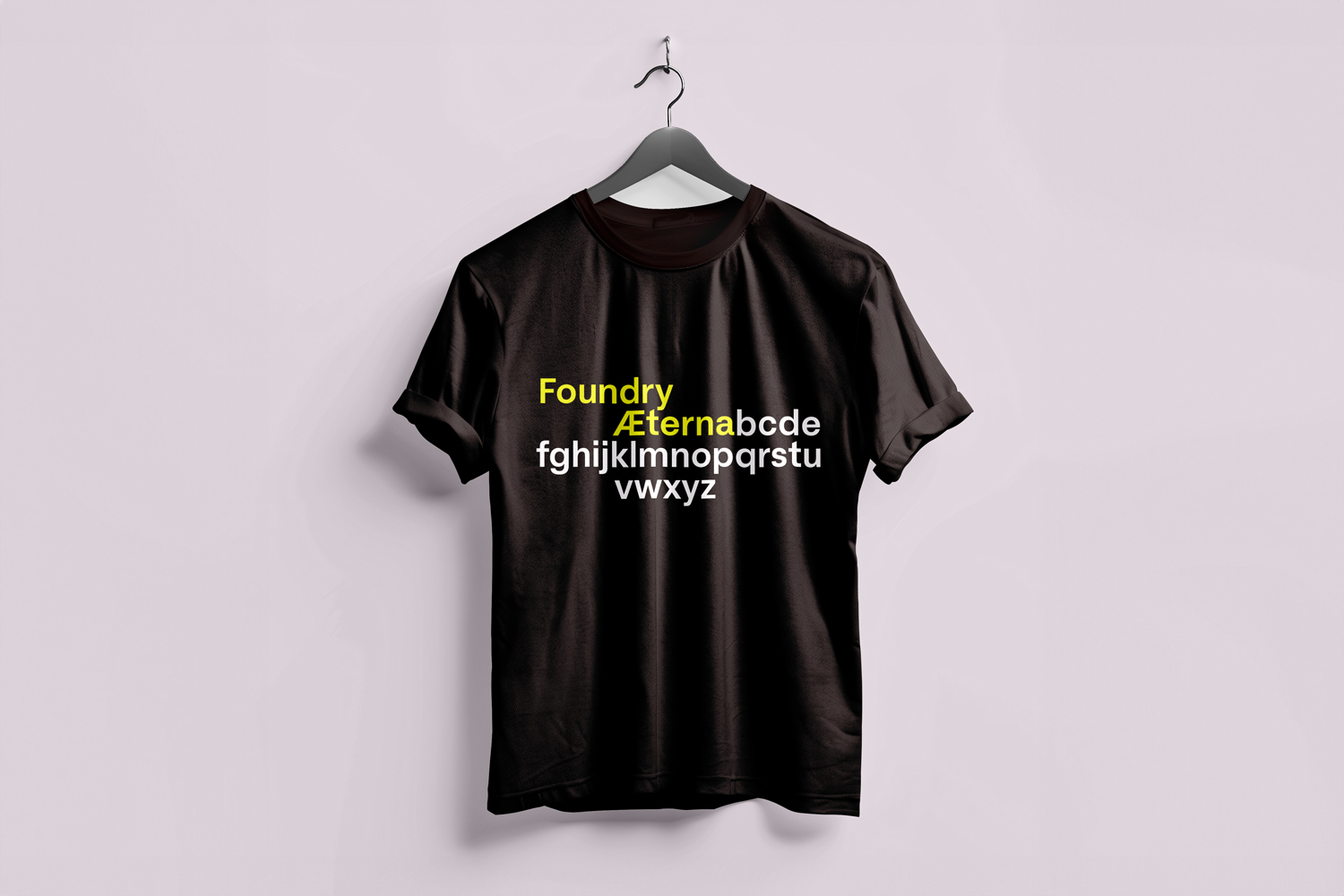
Foundry Aeterna tee-shirt, designed by The Foundry Types.
Download trial font
The trial fonts are not for commercial use. By submitting this 'Download trial font' form, you are agreeing to receive marketing and communication emails from The Foundry Types. These are very occasional, and you can unsubscribe at any time. A download link to the trial fonts will be sent to your email address.